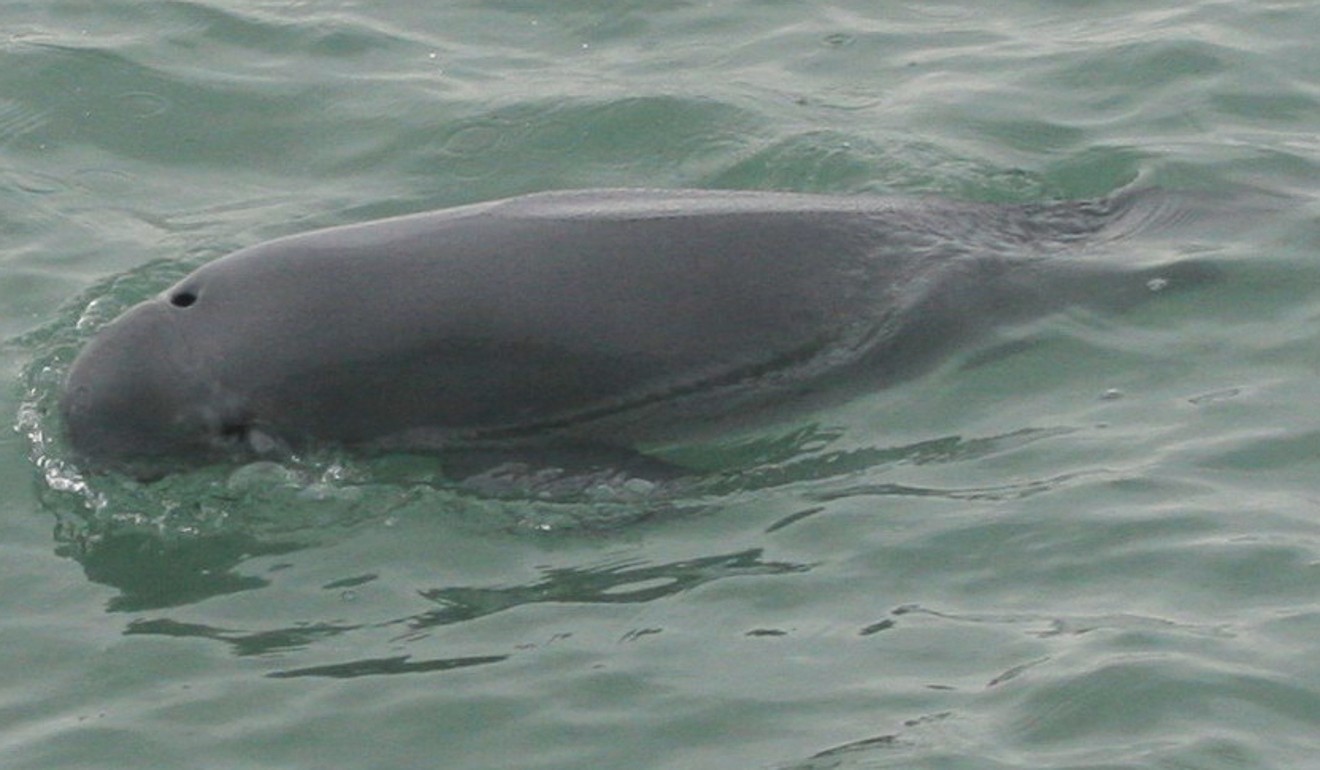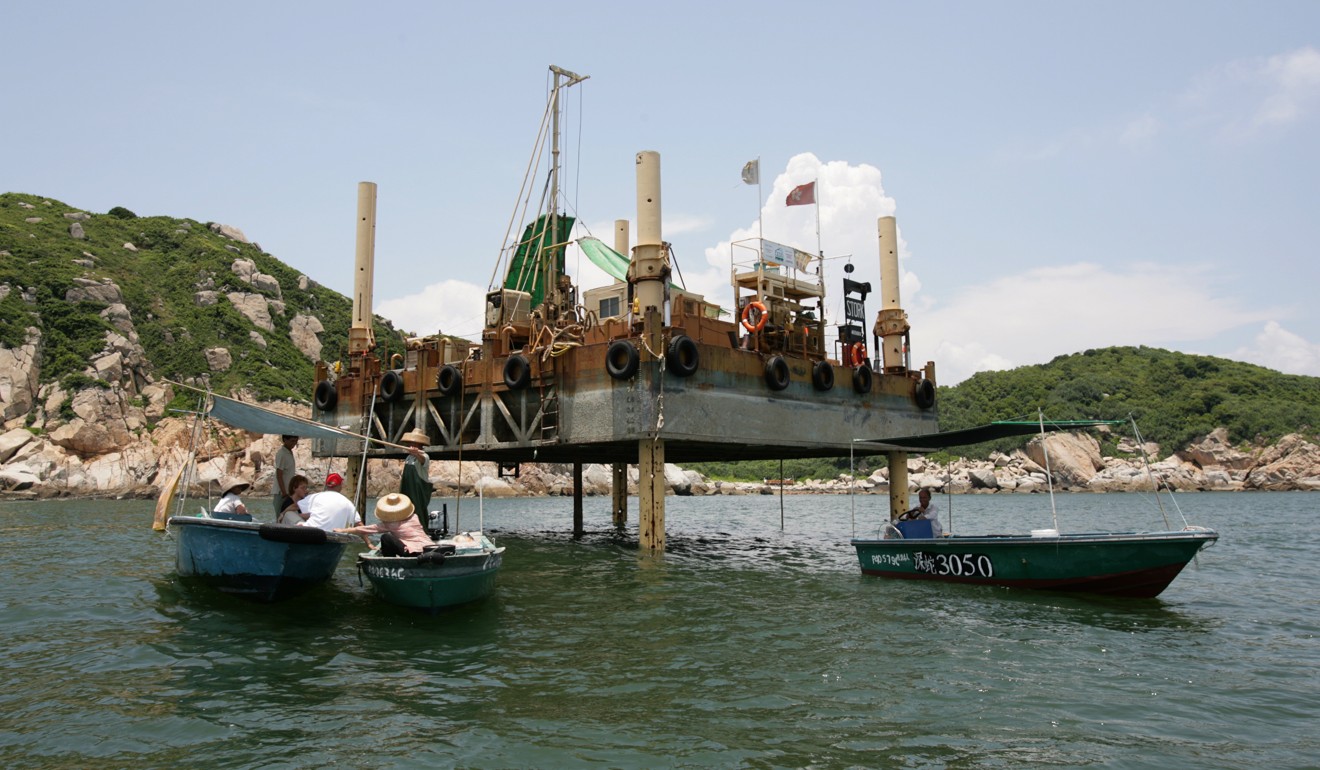
Offshore Hong Kong gas facility that may encroach on porpoise habitat is ‘environmentally acceptable’, CLP Power report says
Assessment is submitted to authorities and put up for public review, but green group says plan will undermine effectiveness of marine park
Building an offshore gas facility in Hong Kong waters would be environmentally acceptable even if 2.5 hectares (6.2 acres) of porpoise habitat were affected, according to a report by one of two power companies in the city.
The Hong Kong public has 30 days to vet an environmental impact assessment which has been submitted to authorities by project proponent CLP Power.
The company said the installation was needed to increase the percentage of relatively cleaner natural gas in its energy mix by 2020, which was in line with government policy to reduce reliance on coal and lower emissions.

HK Electric, the city’s other power supplier, is also a partner in the project.
The 500 by 50-metre floating double-berth jetty will have a marine footprint of 2.5 hectares near the Soko Islands south of Lantau Island. But the area is a key habitat for the finless porpoise and used occasionally by the Chinese white dolphin.
“If the project does not proceed, CLP and HK Electric’s reliability and security of electricity supply could be at risk should one of [its existing] pipelines suffer a disruption,” the report, released on Friday, stated.
Noise from marine traffic ‘poses threat’ to rare Chinese white dolphins
The study, conducted by consultancy Environmental Resources Management, assessed the project’s impact on air quality, noise, hazard to life, water quality, waste management, fisheries, visuals and cultural heritage.
It concluded that construction – which is estimated to take 21 months – and operation of the facility would be “environmentally acceptable” with “mitigation measures”.
First raised in 2016, the idea for the facility was aimed at enabling the city to tap more natural gas from international markets at competitive prices. Currently, Hong Kong relies on a limited pipeline supply from the mainland.
We expect the role of natural gas for power generation will continue to expand in the future
“We expect the role of natural gas for power generation will continue to expand in the future, thus it is of utmost importance that we secure a reliable supply of natural gas,” said Quince Chong Wai-yan, CLP’s chief corporate development officer.
CLP’s gas is now mainly piped from two sources – Central Asia via the Second West-East Gas Pipeline as part of the contract with mainland China, and from the depleting Yacheng gas field near Hainan. As a result, it has little bargaining power over prices.
HK Electric obtains gas from Australia and Qatar by a liquefied natural gas-receiving terminal in Dapeng, Shenzhen.
Under the offshore plan, a regasification vessel will also be permanently berthed at the jetty to convert LNG offloaded by tankers back into gas and send it to the city’s power plants on land.
Two undersea pipelines – 45km and 18km in length – will connect the facility to CLP’s Black Point Power Station in Lung Kwu Tan, Tuen Mun and HK Electric’s Lamma Power Station on Lamma Island, but these would be constructed around protected marine parks.
The report maintained, however, that any environmental impact would be marginal and even reversible.
‘No optimism’ for survival of Chinese white dolphin in Hong Kong waters
“The loss of about 2.5 hectares of finless porpoise habitats within the footprint of the jetty is considered to be acceptable to marine and terrestrial ecology,” it said, adding that the marine mammals were “expected to temporarily avoid active marine construction areas, and would return upon cessation of such activities”.

“The area is very small in size in the context of the surrounding available habitat for the key species.”
But green groups were not convinced.
“The construction of the LNG terminal would unnecessarily compromise the surrounding waters of the Soko Islands, affecting species of conservational concern such as the finless porpoise, Chinese white dolphin and other fisheries resources,” Samantha Lee Mei-wah of WWF Hong Kong said.
“While we do support the use of cleaner fuels for power generation, we cannot accept the trade-off that may compromise the Soko Islands [marine park].”
The conservation group called on the power companies to focus their investment on renewable energy projects and cutting energy consumption.
Natural gas accounts for about 20 to 25 per cent of Hong Kong’s fuel mix.

